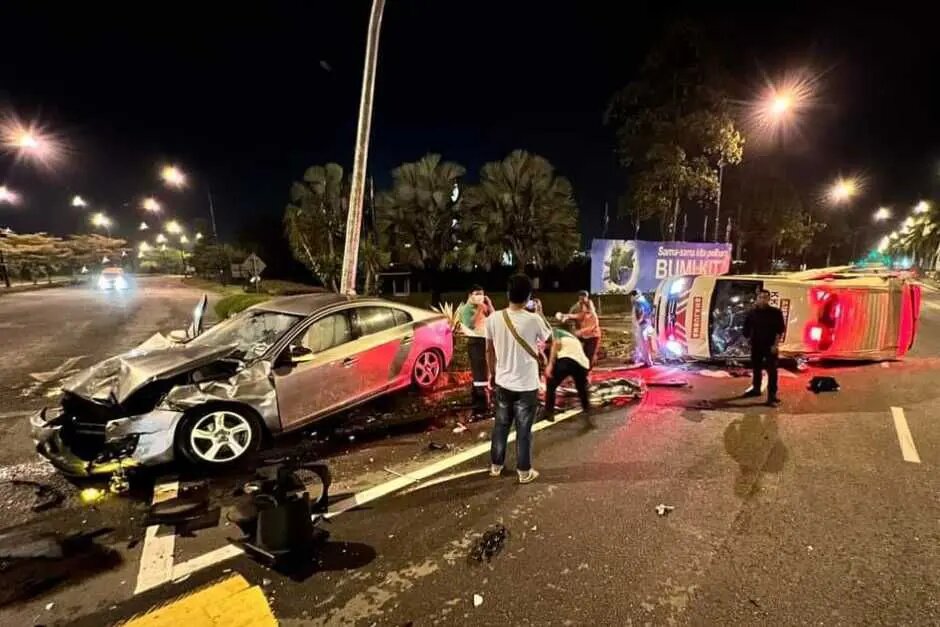
Few lead guitarists in American music have maintained a loyal following as Carlos Santana has over the years. Through his countless lineup iterations and musical directions, Santana has always remained true to himself and boasts a career full of great music and an incomparable guitar tone. Today marks the guitarist’s 77th birthday, and we wanted to celebrate the occasion with some serious jams.
Much like the Grateful Dead, Santana rose through the San Francisco music scene with the help of promoter Bill Graham. Graham helped to foster the artists who defined the counterculture movement, and Santana’s talent for the guitar was undeniable. He caught the attention of the scene by joining an impromptu superjam group, bewildering attendees with his soulful style at venues like the Fillmore West. It’s hard to believe those shows took place almost 60 years ago, considering how fresh and culturally relevant Santana’s sound remains to this day.
Related: Carlos Santana “Taking It Easy” After Collapsing Onstage At Pine Knob
Interestingly, things came full circle at LOCKN’ in 2015, when Santana took the stage with Phil Lesh featuring Friends Warren Haynes, Rob Barraco, Barry Sless, and John Molo. The guitarist took the lead on “Not Fade Away” to start the set and spit fire via his guitar through great versions of Grateful Dead classics like “Scarlet Begonias”, “The Other One”, and many others.
Carlos Santana’s guitar tone is a distinctive thing – a raw, howling blues-cry delivered with Hispanic inflections and a pent-up eroticism. Throughout his five decades making music, however, the man himself has resisted being pigeonholed. “I never really like a low ceiling,” he once told this writer. “I don’t like being put in a box, like I’m the Latin rock guy.” The only musical classification that he’s happy with, and which he says defines his sound and style, is one that he devised himself: ‘multi-dimensional interdenominational music.’
For Santana, it’s a term that embodies what he’s about: music that has no limits and operates on multiple planes, including the spiritual. Santana the band has gone through seventy-two different line ups, with the bandleader himself as shamanistic lynchpin, whose searing, soaring, guitar playing holds all together.
But it wasn’t always that way. In the late-‘60s when the group first emerged as a blues-based jam band in San Francisco, they were a more democratic unit, who blew minds at Woodstock with a sound that had never been heard before – delta blues steeped in percussive salsa grooves. Successful from the get-go, it was in the seventies when the band truly blossomed, and each album they made was a thrilling sonic trip. Though they struggled both commercially and creatively in the late eighties and most of the nineties, in 1999 Santana reinvented his band as a Latin R&B-tinged act and hit the jackpot with Supernatural. Despite all of the band’s recent successes in terms of sales, hits and Grammy awards, though, it’s their classic seventies work that has endured best of all, and really encapsulates what this extraordinary musical adventure is really about.
After the relatively fallow years of the eighties and nineties – the last non-live album before this was 1992’s Milagro – a fresh and reinvigorated incarnation of the group emerged in 1999 with this collaborative, R&B-steeped set. Featuring a panoply of guests ranging from Lauryn Hill and Cee-Lo Green to rapper Everlast and Eric Clapton, Carlos Santana might seem like a sideman on his own record, but his guitar is the sonic glue that binds the disparate elements together. Sales-wise, it catapulted Santana into the stratosphere, and many of the band’s subsequent albums have adhered to a similar template.
Leave a Reply